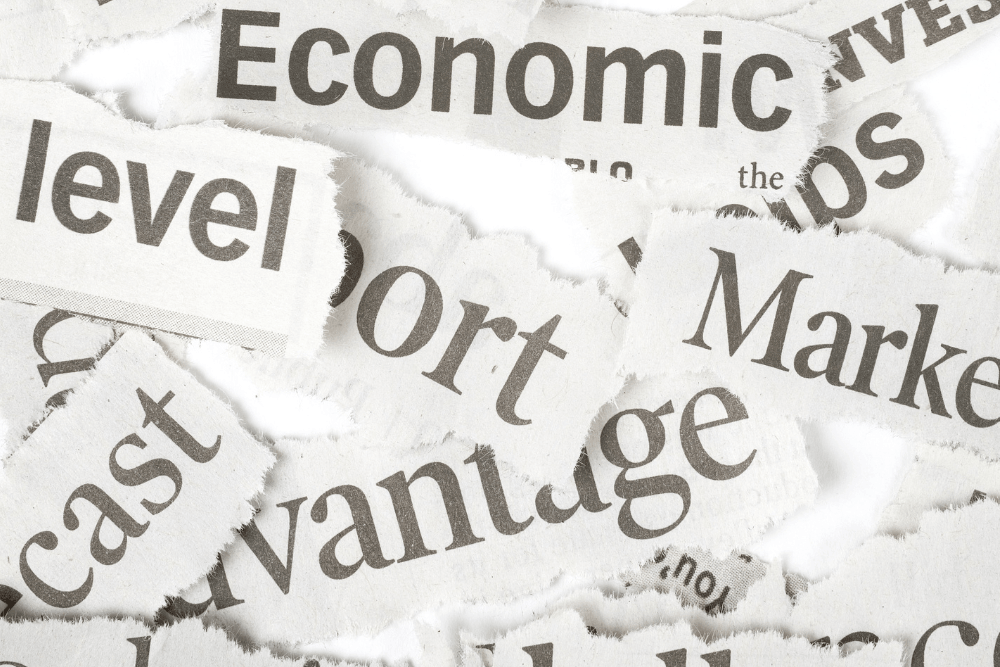
Spring without the sugar: Real talk on the property market right now
- August 7, 2025
As spring approaches, the usual real estate headlines are already resurfacing: “Rates to fall!” “Prices to rise!” “Market heating up!”, we’ve even read this is a firm “seller’s market!”
And while we love the energy that the new season brings, the optimism, the campaigns, the beautiful homes coming to life, we can’t, in good conscience, jump on the hype train….yet.
This isn’t 2021, and when you strip away the gloss, the eye-catching headlines and glance under the bonnet, the real fundamentals don’t look like they are framing up a rocket-fuelled market. Currently, it’s a market running on low supply, cautious optimism, and deep, unspoken concern.
In this article, we wanted to explore and unpack a climate that has almost every key system under pressure – from property accessibility, utilities, GDP output, policy fatigue and shaky institutional performance, which has given rise to a population increasingly sceptical of the story that’s being sold.
The market: stable, but not soaring
Let’s start with the facts:
- Sydney prices rose +0.6% in July
- Annual growth is now +1.8%
- Auction volumes fell 18% from July to August, propping up clearance rates
- Final clearance rates are hovering around 54%, far from boom territory
- A rate cut is widely expected next week – but it may not be the silver bullet many hope for
There is still strong interest in A-grade properties. Buyers are circling, but they’re not rushing. They’re discerning, cautious, and capital-protective, and we don’t see any change to that sentiment.
“House price growth” or “House price inflation”?
It’s a strange quirk of the Aussie psyche, we’re all told how bad inflation is, that is of course until it applies to our own home value increasing.
But here’s the truth: House price growth is inflation and if we reframed it that way, would we celebrate it the same?
Let’s replace house price growth with house price inflation, doesn’t have the same ring to it.
And while inflation has “fallen” to 2.1%, that doesn’t mean life is getting cheaper.
- Groceries are still expensive
- Insurance is climbing
- Dining out costs more
- And energy prices remain volatile
All easing inflation means is that the rate of price increases is slowing, it’s not reversing. We’re still living with the after-effects of the great post-COVID cash flood, and many Australians are now locked into mortgage prisons that will take years to escape.
The RBA: forecasts without faith
If we sound sceptical of rate cut promises, it’s because the institution delivering them has a track record issue.
Recent analysis (by Kieran Davies and Coolabah Capital) reveals:
- The RBA is less accurate at forecasting inflation and unemployment than the Fed or ECB
- Its one-year inflation forecasts have a 95% range of it landing between 0.7% and 4.5% – wow, thanks for the accuracy
- Unemployment forecasts range from 2.5% to 6.1% – which is either a boom or a bust, again, hardly useful forecasting
Translation?
The RBA doesn’t forecast; it nowcasts, reacting more to past data than future trends, which raises questions about its decision-making depth.
Even Christopher Joyce summed it up bluntly: “If you cannot understand the present, you have no hope of anticipating the future.”
And yet, financial markets are betting on three rate cuts by year-end. We’ll believe it when we see it, and only if inflation holds, energy costs don’t spike, and tax policy doesn’t shock the system.
The productivity roundtable: reform or redistribution?
Jim Chalmers’ forthcoming Productivity Summit was pitched as a national conversation on growth.
In reality, it is looking more like a trial balloon for broad tax reform, with a strong undercurrent of redistribution.
What’s being floated by attendees:
- Halving CGT discounts
- Limiting negative gearing
- Including home equity in pension asset tests
- Broadening GST
- Reintroducing carbon pricing
Polls show support for higher taxes on investors with multiple properties and the media is already softening the ground. This isn’t policy yet, but it’s momentum and property owners should be watching closely.
The green spending boom: ambition without execution
At the same time, Climate Minister Chris Bowen announced a 25% expansion to the government’s Capacity Investment Scheme, underwriting 40GW of wind, solar, and battery projects by 2030.
It sounds bold. But the cracks are already visible:
- Humelink, VNI West, EnergyConnect, and other transmission projects are behind schedule
- Dispatchable capacity is not coming online fast enough
- Gas – crucial for peak demand – is excluded federally, despite NSW now opening new gas tenders
- And Prof. Ross Garnaut has warned we’ll miss the 2030 targets “not by a little, but by a big margin”
Which leads to this uncomfortable reality:
We’ve seen this before.
- Snowy Hydro 2.0 – 18-month delay and a blowout from $2 billion to nearly $13 billion
- NBN rollout – over budget, underdelivered, and still trailing international benchmarks
- Submarine contracts, energy hubs, EV infrastructure, all have been plagued by cost, speed, or competence issues
Yet we’re told this time will be different?
The real economy: hollowed and top-heavy
Tarric Brooker’s analysis of the economy cuts to the bone:
What’s growing:
- Government spending
- Public sector employment
- Property asset inflation
What’s shrinking:
- Business lending
- Private investment
- Consumption outside housing
In short: the real economy is being propped up by migration, public money, and hope. With 75% of retirees carrying mortgage debt greater than their super, the system is fraying. And, if the only growth we’re seeing is government-induced, how long before the next tax grab arrives?
So, what’s our take this spring?
We’re not here to peddle fear, we’re here to offer perspective.
The upside:
- Exceptional homes are still commanding premium results
- Active buyers are circling, especially in lifestyle and A-grade markets
- Rate cut expectations are supporting mood and motivation
The reality:
- Buyers are cautious, calculating, and conscious of value
- Government policy risks are rising, not receding
- Media commentary is increasingly performative, not investigative
- Institutions from the RBA to government agencies have rightly so lost some of the public’s trust
Why this spring demands strategy, not slogans
This isn’t a “rates down, prices up” market nor is it “set-and-forget” season either.
This is a market where the cracks in the economy are quietly showing up in the psyche of buyers, through caution, hesitation, and highly selective action.
In a landscape like this, how you run your campaign matters more than ever. Not just whether it sells, but how well, to whom, and on what terms.
Here’s what we believe:
Ignore the fluff.
Media headlines can’t sell your home. Clear insight, honest conversations, and smart timing can.
Trust what you know, not what you’re told.
Buyer behaviour, depth of interest, and stock quality tell a more accurate story than broad-brush optimism.
Work with people who understand strategy, not just process.
This isn’t about unlocking doors. It’s about knowing how to position your property to elevate value, and when to push, pause, or pivot.
Design beats default, every time.
No templates. No lazy timelines. A strong campaign reflects your goals, the unique value of your home, and the rhythm of the market.
At CobdenHayson, we don’t pretend this is a perfect market, it rarely is. But we’ve navigated markets like this before, and we know how to turn complexity into clarity, and clarity into results.
If you’re thinking of selling this spring, don’t rely on headlines, hope, or hype. Rely on a process designed with care, guided with intelligence, and built to perform, no matter what the headlines say next.




